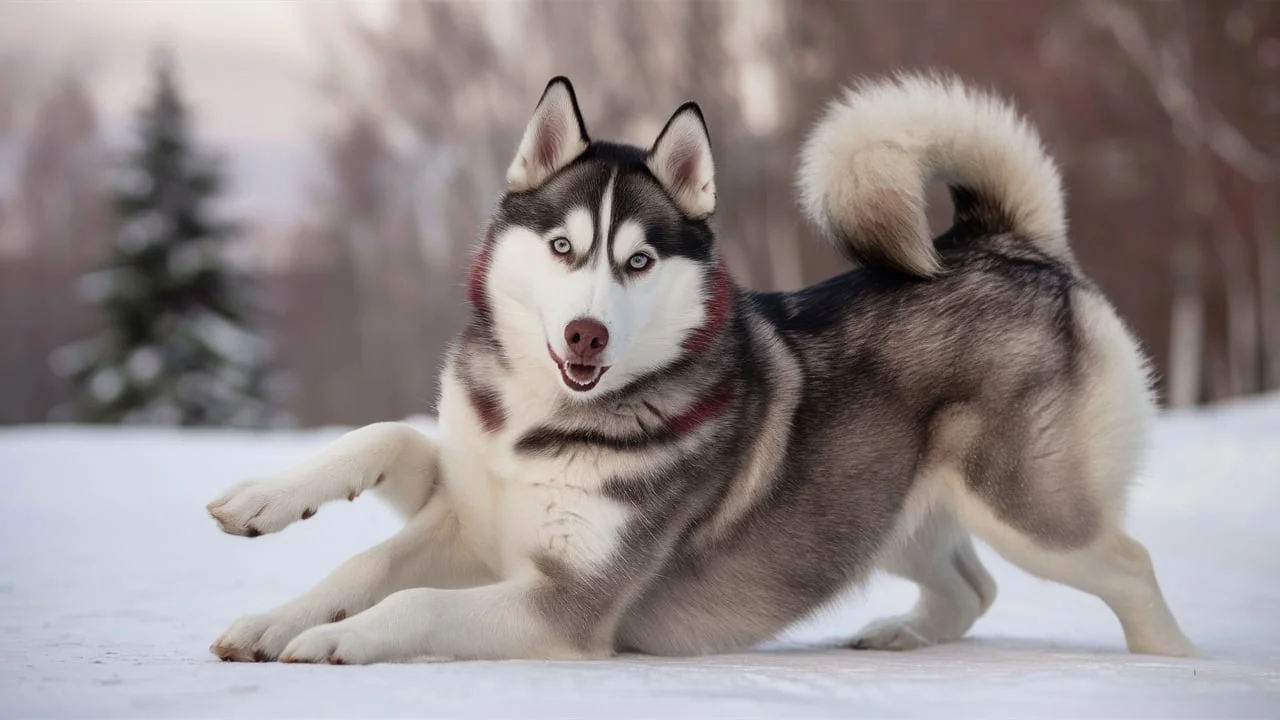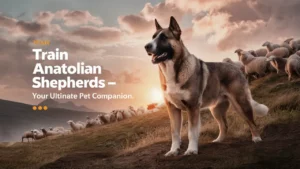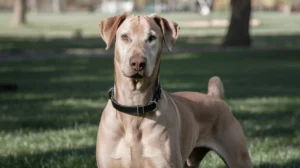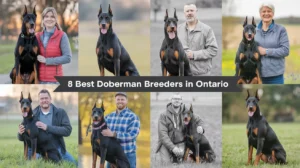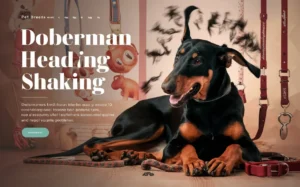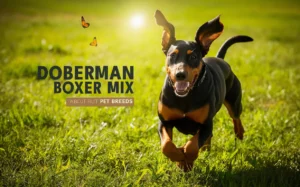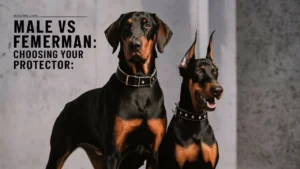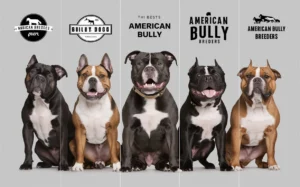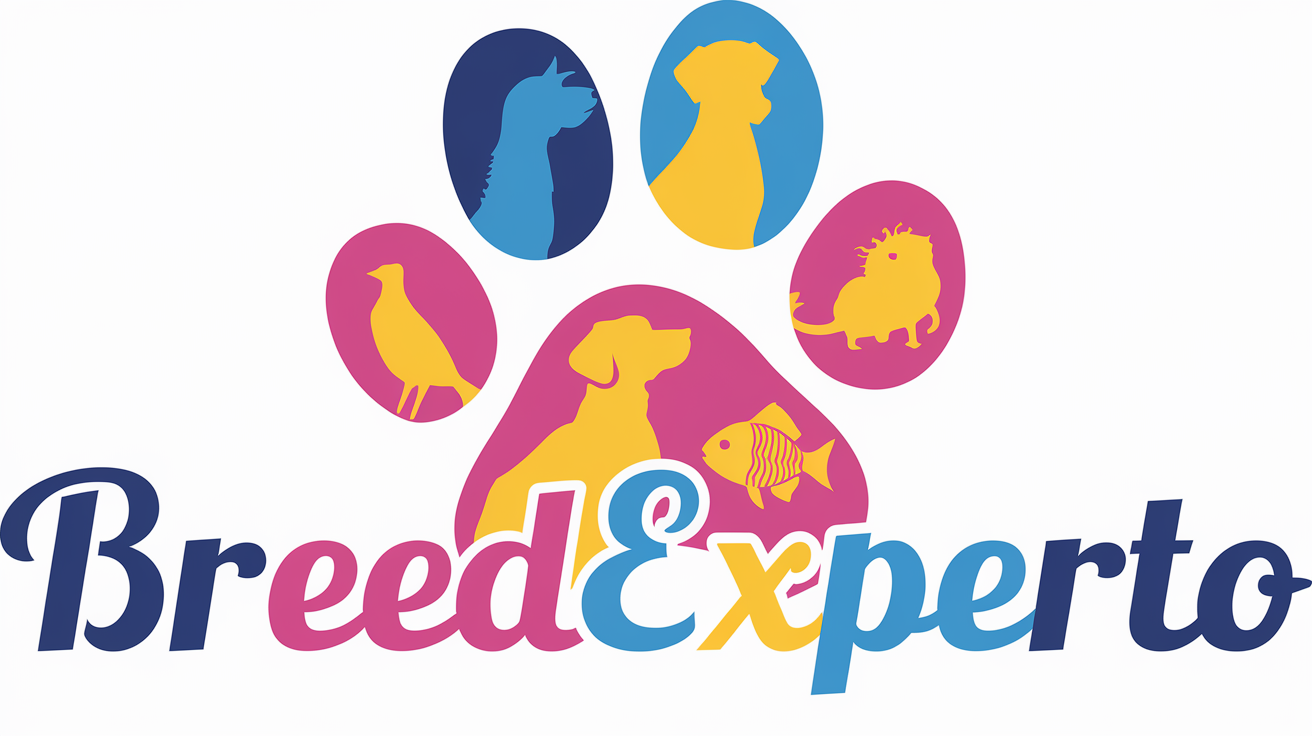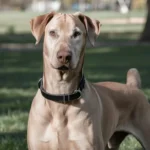Siberian Huskies are one of the most captivating dog breeds, not only for their stunning looks but also for their vibrant personalities.
One of the standout features of these dogs is their beautiful coat colors, which come in a variety of shades and patterns.
In this article, we’ll explore 14 beautiful Husky colors, delving into their characteristics, genetics, grooming needs, and much more.
Grey and White
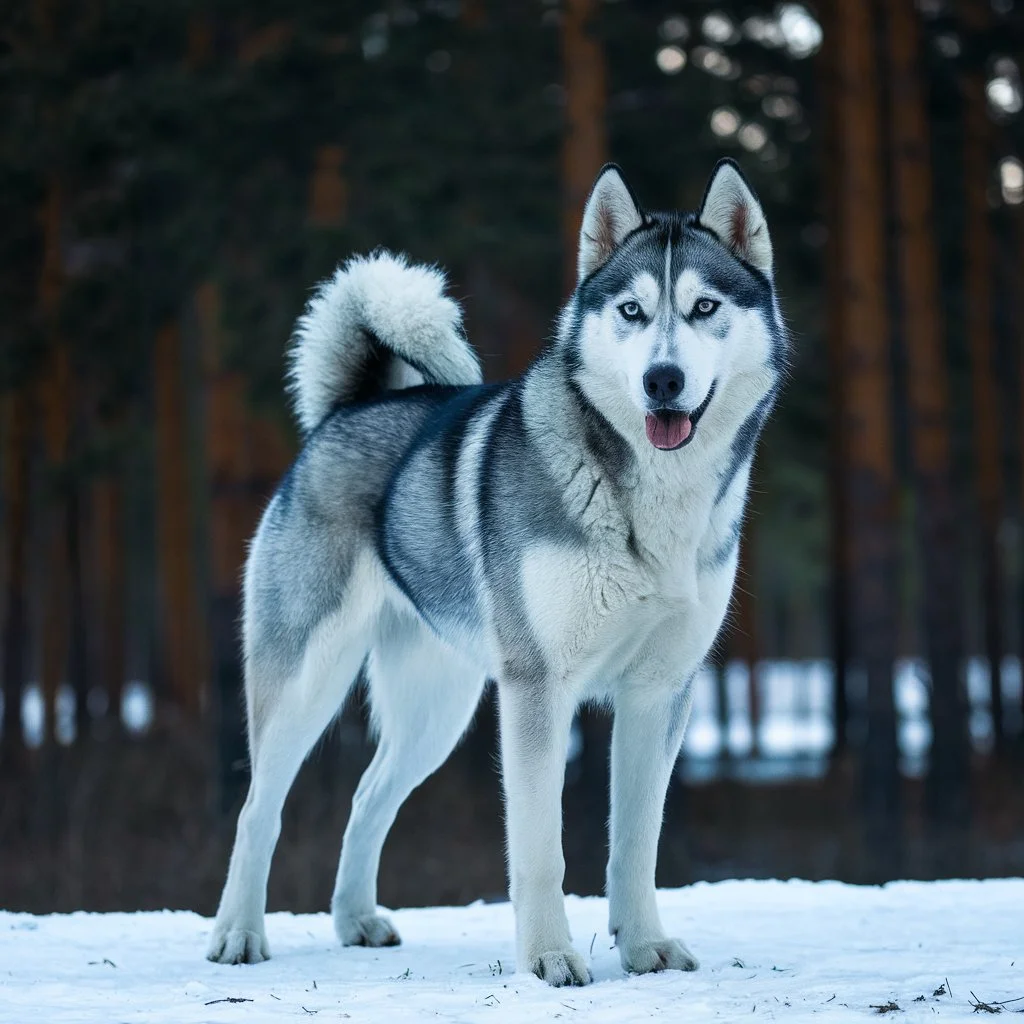
Description: The grey and white color combination is among the most popular for Huskies.
This striking look features a mix of shades ranging from light silver to dark charcoal.
Genetics: Grey coloring in Huskies often results from a mix of black and agouti genes.
The grey coat appears due to a dilution of black pigments. This gene complexity contributes to the variety in shades.
Coat Texture & Shedding: Grey and white Huskies usually have a dense double coat that requires regular grooming to manage shedding.
Typically, they shed heavily twice a year, so brushing a few times a week is essential.
Popular Grey & White Husky Names:
- Ash
- Stormy
- Silver
- Frost
Agouti (Wild Type)
Description: Agouti Huskies present a stunning wild look, often reminiscent of wolves. Their coats are a blend of grey, brown, and black, with banded hairs that create a unique appearance.
Genetics: The agouti gene is responsible for this color and is a wild-type coloration often seen in various canine breeds. It involves complex interactions between multiple alleles.
Unique Traits: Agouti Huskies have a darker face and may show a variety of patterns, with darker tips on the fur. Their wild appearance is often accentuated by striking blue or multicolored eyes.
Best Grooming Practices: Regular brushing is crucial, as their thick double coat can trap dirt and debris. Consider using a slicker brush for optimal results.
Black and White
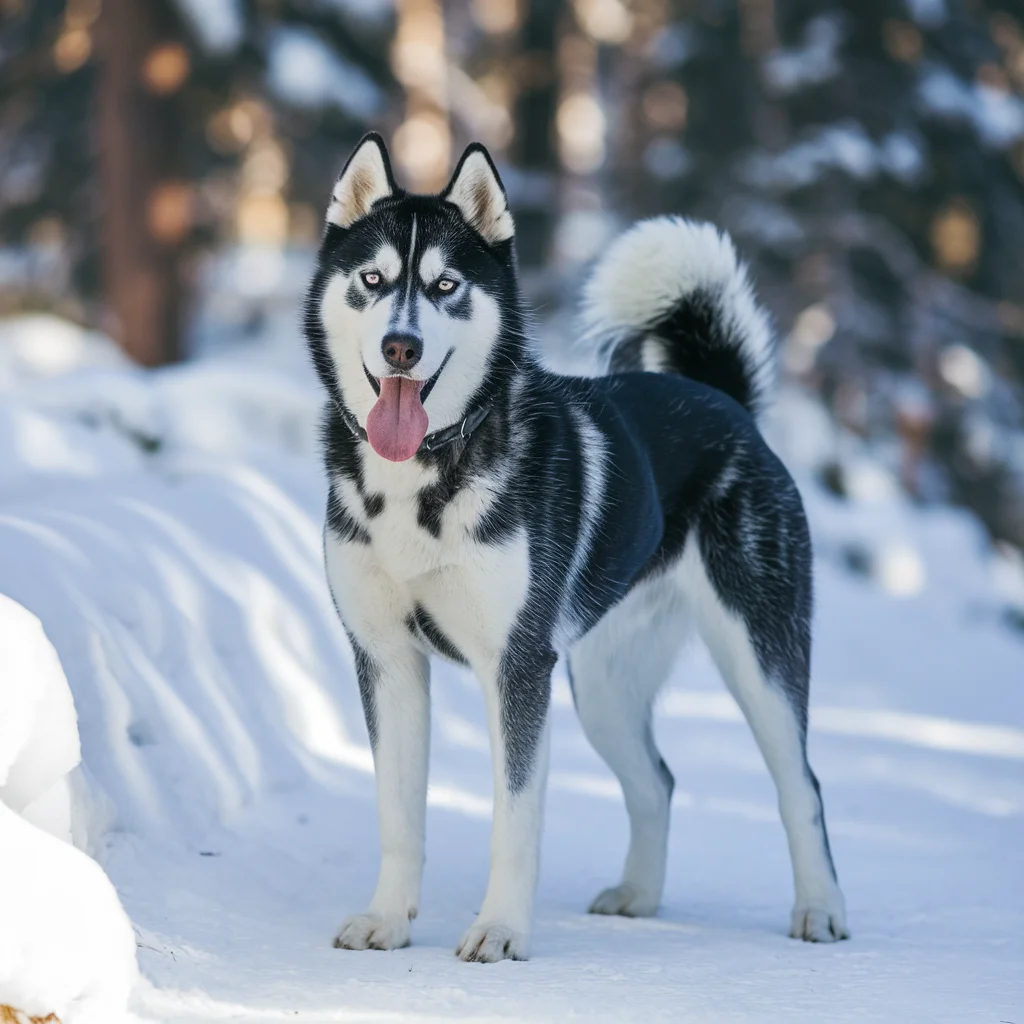
Description: The black and white Husky is another classic color combination that captures attention. Their bold markings can vary widely, from a full mask to a more minimalist appearance.
Genetics: The black coat results from a dominant gene, and the white patches occur due to the presence of the piebald gene. These Huskies often have striking contrasts that enhance their features.
Common Patterns: Patterns seen in black and white Huskies include:
- Masks
- Saddlebacks
- Face markings
Health Considerations: There is no direct correlation between coat color and health; however, it’s essential to ensure that they receive regular veterinary check-ups and a healthy diet.
Domino Agouti (Unofficial Name)
Description: The Domino Agouti Husky features a beautiful mix of agouti coloration with lighter patches, creating a unique and visually appealing look.
Genetics: This color does not have an official recognition due to its rarity, but it emerges from a combination of agouti and piebald genetics.
Coat Appearance: The light patches on a dark background create a stunning contrast. The exact pattern can vary greatly from one dog to another.
Rarity Factor: Domino Agouti Huskies are rare, making them highly sought after by breeders and enthusiasts. If you find one, you’re looking at a unique companion.
Red Agouti
Description: The Red Agouti Husky is a beautiful and rare combination of red tones and agouti shading, making them stand out in a crowd.
Genetics: This color occurs when the agouti gene combines with red pigmentation. The result is a warm, earthy tone that many dog lovers adore.
Coat Texture: Red Agouti coats are typically soft and thick, requiring regular grooming to prevent matting.
Temperament Myths: There’s a common myth that red Huskies are more aggressive or energetic than others.
In reality, temperament is influenced more by individual personality and training than coat color.
Light Red and White
Description: Light Red and White Huskies feature a soft, pale hue that combines shades of cream and light red, resulting in an ethereal look.
Genetics: The lighter coloration occurs due to the dilution of the red gene. The presence of white fur also contributes to the light appearance.
Shedding and Grooming: Like other Husky colors, they shed heavily twice a year. Regular grooming helps manage shedding and keeps their coats healthy.
Popular Names for Light Red and White Huskies:
- Pearl
- Sandy
- Vanilla
Red and White
Description: The classic Red and White Husky boasts a rich, vibrant red coat paired with white markings. This combination is one of the most iconic among the breed.
Genetics: The red coat is a result of recessive genes, and the white areas occur due to the piebald gene. This color can range from a deep red to a lighter copper shade.
Sunlight Impact: Red Huskies are prone to color fading if exposed to excessive sunlight.
Protective measures, such as providing shade or limiting sun exposure, can help maintain their vibrant coat.
Personality Insights: Many owners note that red and white Huskies often have lively and playful personalities, though individual temperament can vary.
Domino Tanpoint and Tanpoint (Unofficial Names)
Description: The Tanpoint Husky is characterized by a mix of tan highlights paired with other colors, often resulting in a unique two-tone appearance.
Genetics: This coloration arises from recessive genes affecting the distribution of pigment across the coat.
Appearance Features: Tan points typically appear on the face, legs, and around the eyes. This combination creates a distinctive and eye-catching look.
Coat Care Tips: Regular brushing is necessary to prevent tangles and mats. A conditioning spray can help keep their coat manageable.
Red KB Domino Tanpoint (Unofficial Name)
Description: The Red KB Domino Tanpoint combines red with tan highlights, producing a striking, rare pattern that catches the eye.
Genetics: This unofficial color emerges from a combination of red, domino, and tan point genetics. It showcases a unique mix of colors.
Color Changes Over Time: As these Huskies age, their coats may undergo changes, such as fading or darkening. Regular grooming helps to manage these changes.
Unique Appeal: The rarity and beauty of this coloration make them highly coveted among Husky enthusiasts.
Solid Black or Seal – Solid Red or Red Seal

Description: Solid black or seal Huskies present a sleek, monochromatic look, while solid red or red seal Huskies boast deep, rich coloration.
Genetics: The solid black coat arises from a dominant gene, while the solid red coat results from recessive genes. Seal is a diluted version of black.
Common Confusion: Seal and solid black coats can look quite similar, but seal Huskies often have a brownish tint. This differentiation is crucial for breeders and enthusiasts.
Health Concerns: Solid-colored Huskies do not have specific health concerns tied to their coat color, but regular veterinary care is vital for overall health.
White
Description: The pure white Husky is striking and beautiful, resembling the Arctic wolf. Their pristine coats are truly captivating.
Genetics: The white coloration occurs due to a specific genetic mutation that prevents the expression of other colors.
Albino vs. White Huskies: It’s essential to distinguish between albino Huskies, which have pink eyes and lack pigmentation, and true white Huskies, which can have blue or brown eyes.
Grooming Needs: White Huskies require frequent grooming to maintain their coat’s cleanliness and shine. Consider using whitening shampoo to keep their coat bright.
Piebald
Description: Piebald Huskies are marked by irregular patches of color on a white background, creating a unique and varied appearance.
Genetics: The piebald gene affects how colors are distributed across the coat, leading to the characteristic patchy look.
Marking Variations: Piebald patterns can vary significantly, with some Huskies featuring large patches and others having smaller spots.
Fun Facts: Piebald Huskies are often considered the most visually unique due to their unpredictable patterns, making each dog truly one of a kind.
Sable (Dominant Yellow)
Description: The Sable Husky features a beautiful mix of golden, reddish, or yellowish hues with darker tips, creating a striking look.
Genetics: The dominant sable gene results in this coloration, which can vary greatly among individual dogs.
Color Changes: As sable Huskies age, their colors may deepen or lighten. This change can make grooming an essential part of maintaining their coat’s vibrancy.
Best Grooming Products: Consider using high-quality shampoo and conditioner designed for double-coated breeds to keep their coat healthy and vibrant.
Saddleback
Description: Saddleback Huskies have a distinctive pattern with a darker “saddle” covering their back, while the rest of the body is lighter.
Genetics: The saddleback pattern results from recessive genes and can be found in various colors.
Pattern Uniqueness: Each saddleback Husky presents a different pattern, ensuring that no two look the same. This uniqueness is a significant attraction for many owners.
Grooming & Maintenance: Regular brushing helps keep their coat free from mats, and it’s essential to keep an eye on their undercoat, especially during shedding seasons.
Conclusion
Siberian Huskies offer an incredible variety of coat colors, each with its unique traits and charm.
Whether you’re drawn to the classic black and white, the rare red agouti, or the striking piebald, every color has something special to offer.
When choosing a Husky, remember that their coat color can influence grooming needs and may even hint at their personality traits. Regardless of
